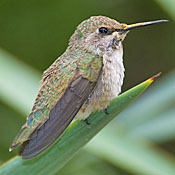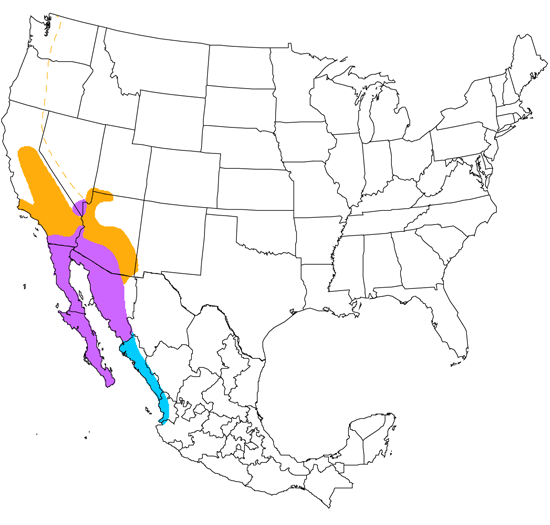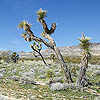Costa's Hummingbird
Coragyps costae

Hummingbird

Length: 4 in. (9 cm )
An inhabitant of chaparral, arid brushlands and desert vegetation, this small hummingbird nests in the cooler winter months. The male's high-pitched and shrill courtship buzz is a common but often difficult-to-locate sound in these habitats. The tiny nest is located low in dense shrubbery or occasionally in yucca plants. It is made of plant down, leaves, and flowers and held together by spider webbing. Their food is nectar spiced with tiny insects and spiders.
The four-digit banding code is COHU.
Bibliographic details:
- Article: Costa's Hummingbird
- Author(s): Dr. Biology
- Publisher: Arizona State University School of Life Sciences Ask A Biologist
- Site name: ASU - Ask A Biologist
- Date published:
- Date accessed:
- Link: https://askabiologist.asu.edu/activities/bird/costas-hummingbird
APA Style
Dr. Biology. (). Costa's Hummingbird. ASU - Ask A Biologist. Retrieved from https://askabiologist.asu.edu/activities/bird/costas-hummingbird
Chicago Manual of Style
Dr. Biology. "Costa's Hummingbird". ASU - Ask A Biologist. . https://askabiologist.asu.edu/activities/bird/costas-hummingbird
Dr. Biology. "Costa's Hummingbird". ASU - Ask A Biologist. . ASU - Ask A Biologist, Web. https://askabiologist.asu.edu/activities/bird/costas-hummingbird
MLA 2017 Style
Be Part of
Ask A Biologist
By volunteering, or simply sending us feedback on the site. Scientists, teachers, writers, illustrators, and translators are all important to the program. If you are interested in helping with the website we have a Volunteers page to get the process started.






